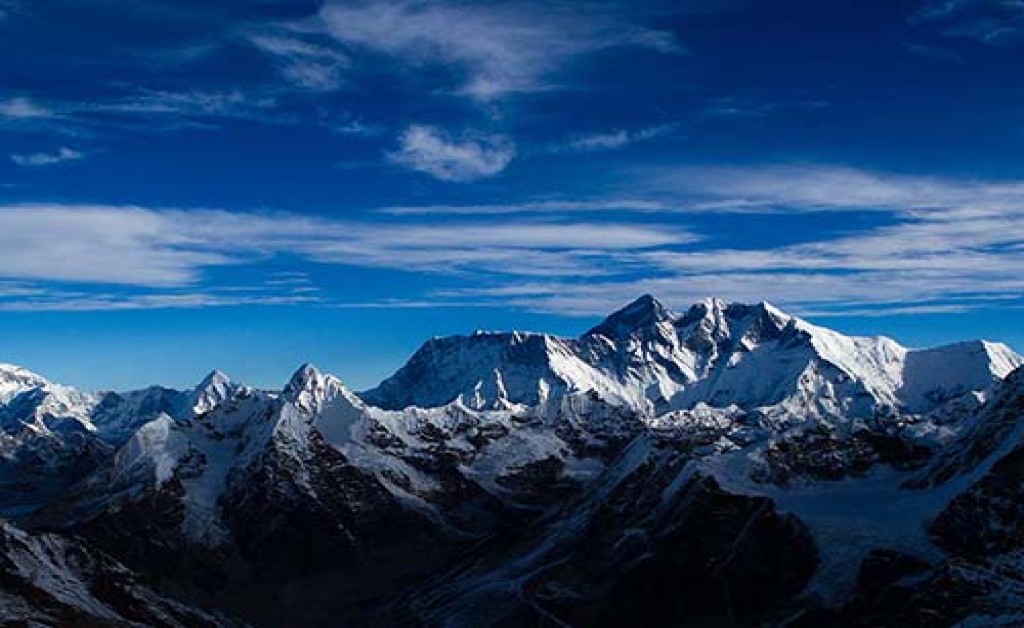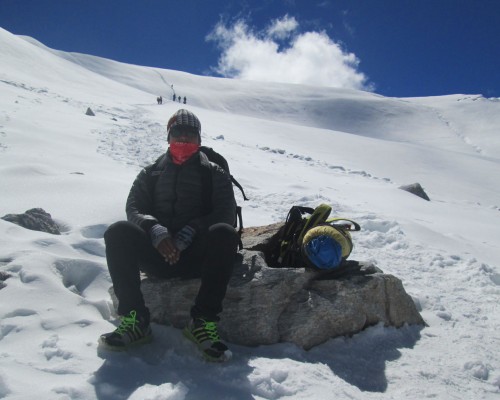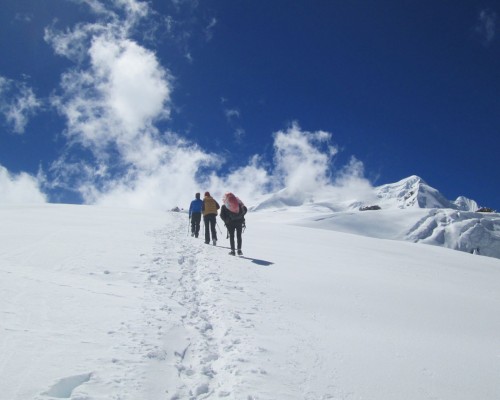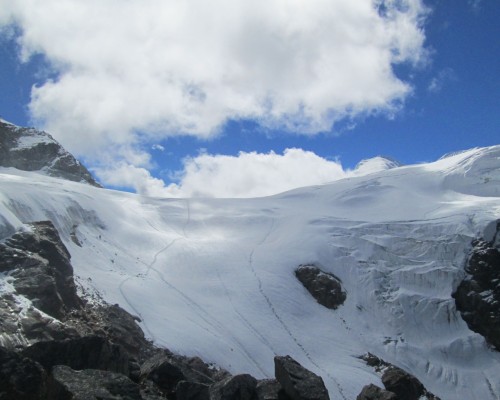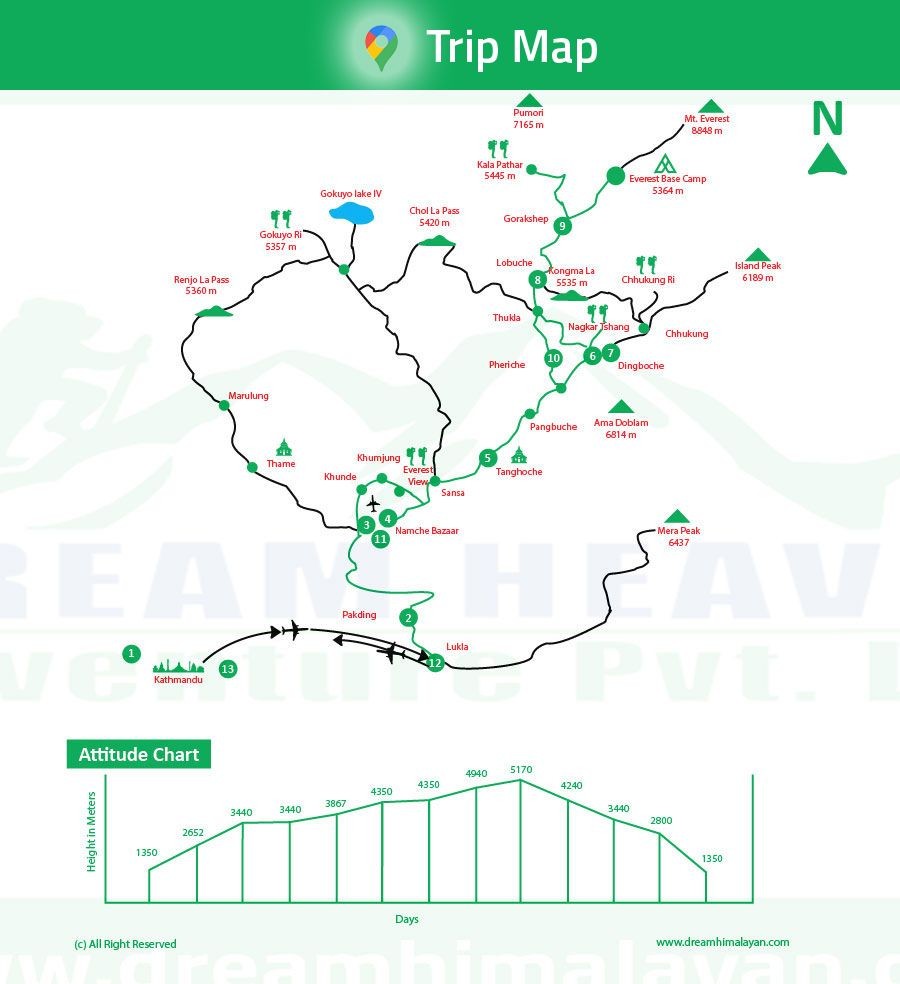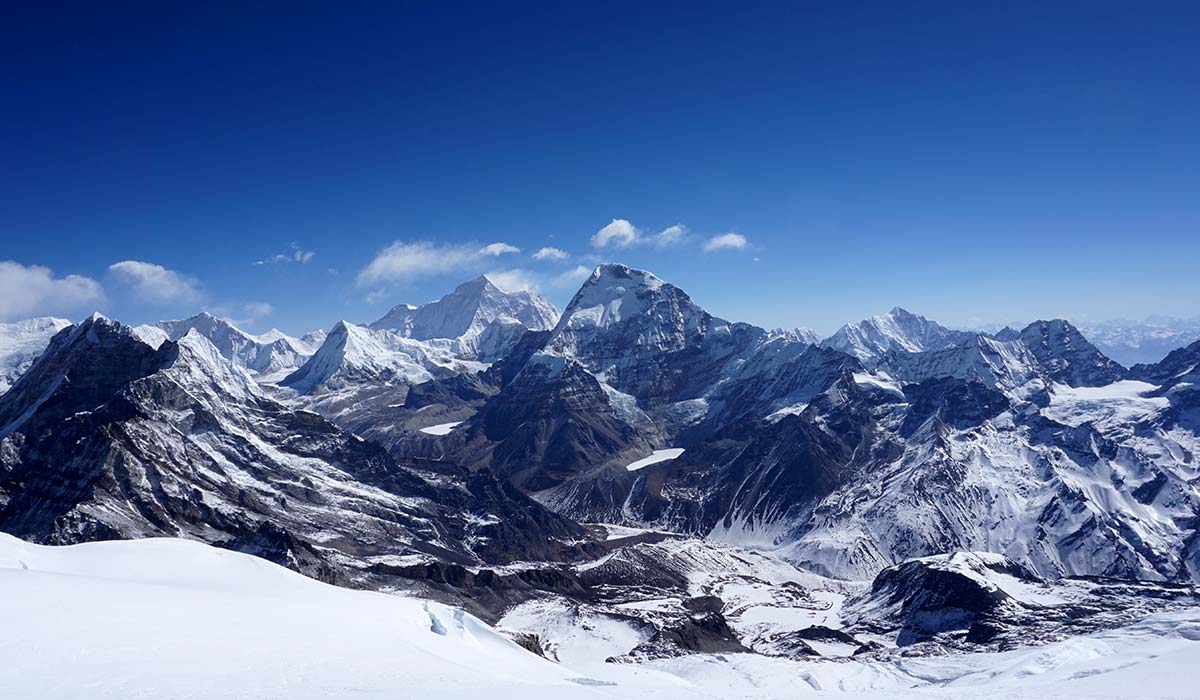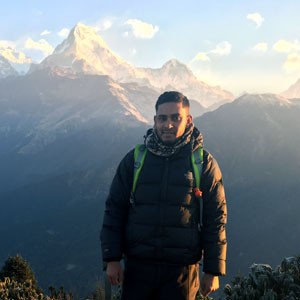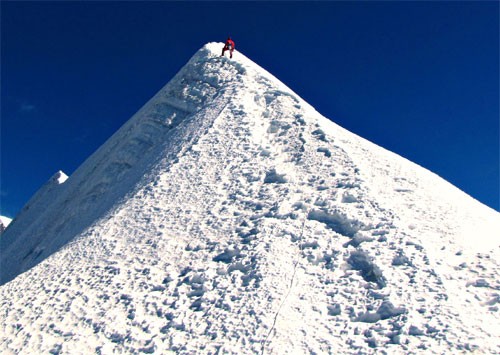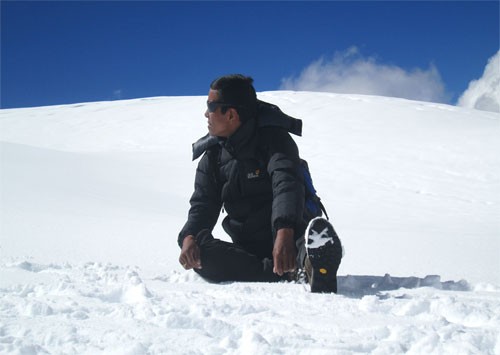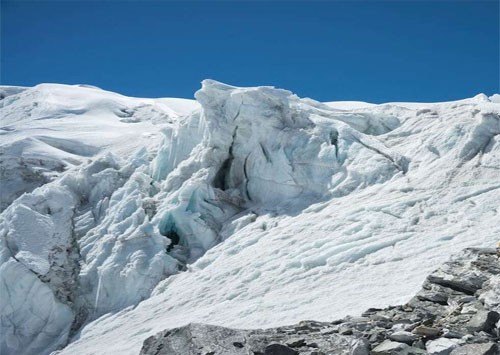Standing at 6,476 meters, this peak is Nepal’s highest trekking peak. Mera Peak involves one of the most thrilling adventures in the Himalayas. In 1953, British explorer J.O.M. Roberts and Sherpa Sen Tenzing became the first to succeed in a first ascent. The peak’s name is derived from the local Sherpa language, Mera meaning “giant,” and so well, it represents the peak’s dominance over the Mahalangur region.
Mera Peak was first explored by amateurs or learners to climb bigger peaks in the future, like for possible avenues to Everest, but the route soon evolved into a trekkers' icon.
The Peak is indefinitely eye-catching, it sits at a reasonable enough altitude to climb yet is not so technical that it requires swaths of climbing experience, it is the Adventure Seekers dream hike.
Climbers are rewarded when reaching the summit with wide views of some of the world’s greatest mountains, Everest, Lhotse, Cho Oyu, Makalu, and Kanchenjunga. Mera peak is a harness of natural beauty, cultural immersion and historical significance, which has become a landmark to all climbers. Here's a thorough guide to help you summit this big boy.
Who Can and Cannot Do the Trek to Mera Peak Climbing?
Mera Peak Climbing is available for those people between the age of 14 and 60 and therefore must meet certain physical and mental requirements to take part in any kind of Mera Peak Climbing. It’s a trek that involves combining high altitudes and tough terrain that participants should significantly be in excellent health for.
It is not a technical climb still the combinations of steep ascents, altitude, and cold temperatures require stamina, strength and flexibility. If you have a good fitness base, you 14 years or above can climb this height.
Nonetheless, teens below 18 are still encouraged to participate with adult supervision, however they should have prior experience of trekking so as to be prepared for the demands of the expedition.
Good cardiovascular health and a history of high altitude treks are vital for everyone but especially those above 50 of age. Altitude sickness is a particularly worrisome malady for those older trekkers, and the danger increases the older you get.
Mera Peak is not advised for anyone with already existing heart, lung, or respiratory conditions as efforts made during high altitude will probably make these conditions worse. Interestingly, climbers should have strong mental resilience regardless of age. The trek is long days (6 or 7 hours) of walking over varying weather conditions, mentality as much as physical strength is required.
Acclimatization is all and those who ignore it are likely to fall victim to the dangers of altitude sickness. Cardiovascular exercises, strength training and getting trekking ready with hiking or similar high altitude trekking activities should be on your fitness preparation before the trek.
If you are the one engaging smartly in these preparations and have ideal overall health, you will be in a position to have a trip off the Mera Peak climb and enjoy the amazing views from the summit.
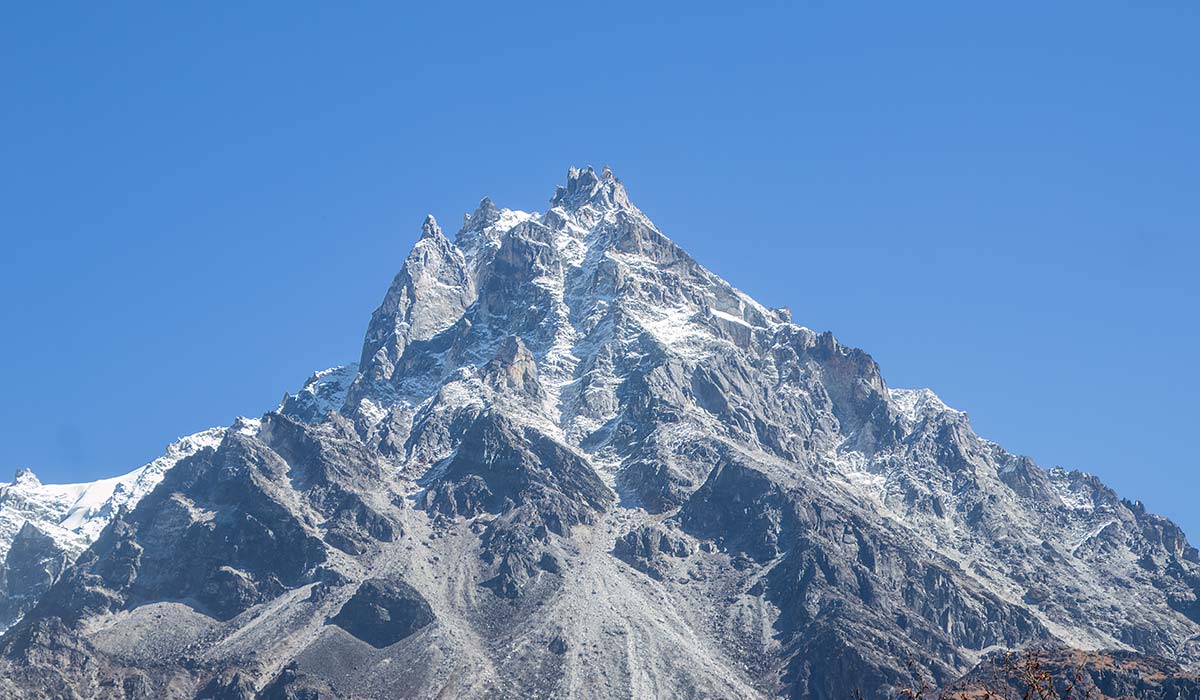
What Makes Mera Peak Climbing So Special?
Among Nepal’s trekking peaks, Mera Peak has a unique position, particularly historically and culturally.
The cultural richness of the route makes Mera Peak one of the . The trek will lead you through remote Sherpa villages of Lukla and Khare to meet for authentic Sherpa hospitality and traditions. Buddhist spiritual presence is in the air with prayer flags, monasteries and chortens scattered about.
The combination of cultural elements, lush rhododendron forests with glacial rivers that make up the tour to Mera Peak is more than a climb to the highest peak, it's a deep dive into Khumbu's heritage.
One thing that makes Mera Peak stand out from other trekking peaks is the fact that the summit has a 360 view that is simply breathtaking. Climbers are treated to unobstructed vistas of five of the world’s highest peaks Lhotse, Everest, Cho Oyu, Makalu, and Kanchenjunga.
The sunny view from the summit as the sun comes up is the most amazing as the first rays of sunlight hit the mountains covered in snow making them golden. Adventurers are drawn to this unparalleled view, and it makes Mera Peak one of the choice climbing spots for both novice and experienced trekkers.
In addition, Mera Peak’s not entirely technical as mentioned before, meaning it’s possible for many adventurers to make it to these heights without the requisite climbing skills. It’s not an easy climb, but with basic mountaineering equipment including crampons and ice axes, absolutely anyone with a decent fitness level and a bit of preparation can take on the adventure.
The Mera Peak trail is a little more remote than the somewhat more crowded routes like Everest Base Camp or Annapurna Circuit, and thus a little more tranquil and solitary, allowing climbers to enjoy the raw Himalayas in peace.
The Best Time of Year to Visit Mera Peak Climbing
The best time to climb Mera Peak is pre monsoon season (March to May) and post monsoon season (September to November).
By the pre-monsoon time, temperature drops from 5°C to 20°C (41°F to 68°F) at lower elevations. Trekking is best undertaken at this time when there is stable weather. Views of the surrounding peaks are open and trees are blooming with rhododendrons that add bright colors to the landscape. And the trails are generally dry. As this is the prime time for trekking, trails may be a lot busier, but the climb under the right conditions is more than worth it.
During the post monsoon season, cooler temperatures ranging from 0°C to 15°C (32degC to 59degF) are found at lower elevations. With the skies clearing after the monsoon rains, which generally last until late September, the Himalayan range has epic visibility. Fewer trekkers come to climb this season than pre-monsoon and the trails here are less crowded.
During this period, from June to August, the trails mud up due to excessive rainfall, there may be landslides and it is not uncommon for the trails to be closed. This time it’s not advised to climb due to the risk of danger. Cold, however, does not end in summer, temperatures for instance can be a mighty -10°C (14 °F) and climbing in winter (December to February) is hard work due to snow and ice.

